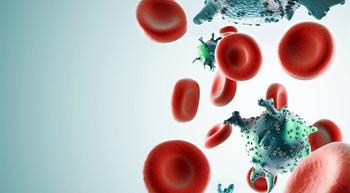
Treatment Intensity After Deferring Initial Therapy May Not Indicate Improved Survival in Mantle Cell Lymphoma
Researchers observed no difference in overall and progression-free survival in patients with mantle cell lymphoma who started high-intensity treatment at least 90 days after receiving a diagnosis compared with a non-intensive therapy approach.
Intensive treatment in patients with mantle cell lymphoma who originally deferred treatment may not improve survival compared with receiving non-intensive treatment, according to a study published in the European Journal of Hematology.
“Overall, our study suggests that intensive treatment may not be required in most patients who defer therapy,” the study authors wrote. “Future studies should collect biologic prognostic markers with the goal of informing which patients still should receive more intensive therapy. In the absence of prospective data, we recommend that markers associated with inferior outcomes are utilized to identify patients who should receive intensive therapy while many patients deferring treatment can likely receive a less intensive approach.”
To determine the potential impact of induction treatment intensity, researchers analyzed data from 219 patients with mantle cell lymphoma who started therapy at least 90 days after receiving their diagnosis. Of these patients, 88 received intensive therapy, defined as those who received induction with autologous stem cell transplantation and/or high-dose cytarabine in first remission, and 131 patients received non-intensive treatment approaches.
Researchers assessed several factors including progression-free survival (time that a patient lives with cancer without disease worsening) and overall survival (time that a patient with cancer is still alive).
Overall survival and progression-free survival did not differ between patients who received intensive therapy and those who received non-intensive therapy. These factors also did not differ when researchers refined the patient population to patients who received the current treatment standard of postinduction rituximab.
Patients who received treatment at an academic center were more likely to have improved overall survival. In addition, treatment intensity was not linked with improved overall survival.
“Our dataset spans 15 years, during which standards of therapy have evolved, and while we have attempted to account for some of these changes (ie, post-induction rituximab), it will be important to confirm these findings in the setting of today’s standard of therapy through prospective trials,” the study authors wrote.
For more news on cancer updates, research and education, don’t forget to




